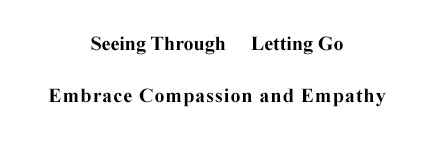In this post, we discuss the Observer Effect. The Observer Effect is associated with the Double-Slit Experiment and was discovered in 1801 by British polymath Thomas Young (1773-1829).
The animated introduction provided by the TED-Ed video helps to understand the link between the double-slit experiment and why physics Richard Feynman (1918-1988), a 1965 Nobel Laureate, deemed it the Central Mystery of Quantum Mechanics.
The video starts by stating, “One of the most amazing facts in physics: everything in the universe, from light to electrons to atoms, behaves like a particle and wave at the same time.” After a brief historical introduction to how particles and waves become one, the video discusses the double-slit experiment.
The experiment involves shooting single electrons at a barrier with two slits cut into it. “Each electron is detected at a specific place at a specific time like a particle. But when you repeat the experiment many times, all the individual electrons trace out a pattern of stripes, characteristic of wave behavior. The idea that particles behave like waves, and vice versa, is one of the strangest and the most powerful in physics. Richard Feynman famously said that this illustrates the central mystery of quantum mechanics. “
Dr. Neil deGrasse Tyson, commenting on Thomas Young’s Double Slit Experiment 2.0, tells why the double-slit experiment is also known as the Observer Effect. When a scientific detector is used to observe which of the two slits the photons go through, the wave pattern disappears and is replaced by two bands, which are reminiscent of particles. However, when the scientific sensor is removed, the wave pattern returns. It seems like the “observation” by a scientific detector changed reality. Dr. deGrasse Tyson concludes as follows, “So the reason that we didn’t get the interference pattern earlier wasn’t because we chopped up the light into single photons, it was because we were observing which slit the photos passed through. But how can a photon know if someone is watching.”
Finally, he concludes, “On the smallest possible scale that we’ve ever discovered, the quantum universe, the mere act of observation changes reality.” Additionally, he suggests that “no one else on earth understands it yet.”
From the Buddhist standpoint, Dr. deGrasse Tyson is wrong on both counts. Not only did Buddha know about the Observer Effect thousands of years ago and teach that it begins in the quantum realm with the epiphenomena in the Three Delicate Marks, but neither did reality change upon observation. What changed is not reality but a different manifestation of the same reality.
Let’s start with the scientific solution to the Observer Effect favored by scientists. According to Dr. O’Dowd in this video, among the many possible solutions, scientists favor the Copahengan Interpretation, as did Drs. Werner Heisenberg and Niels Bohr, both Nobel Laureates and pioneers of quantum mechanics. The Copenhagen Interpretation suggests that a wave function is collapsed as realities change.
The Copenhagen Interpretation assumes that the wave function “doesn’t have a physical nature. Instead, it’s comprised of pure possibility. It suggests that a particle traversing the double-slit experiment exists only as a wave of possible locations that ultimately encompasses all possible paths. It is only when the particle is detected that a location and the path it took to get there are decided. The Copenhagen Interpretation calls the transition from a possible space to a defined set of properties “the collapse of the wave function.” “At that point, the Copenhagen Interpretation tells us that a true transition happens between wave and particle.” It happens “for some reason.”
However, to make the Copenhagen Interpretation work, the wave has to hold “information about all the possible final positions of the particle but also about its possible positions at every stage in the journey. In fact, the wave must map out all possible paths that the particle could take. We have this family of could-be trajectories from start to finish and for some reason, when the wave reaches the screen, it chooses a final location and that implies choosing from these possible paths.”
Finally, Dr. O’dowd asks, “So, what causes this transition between a wave of many possibilities and a well-defined thing at a particular spot?” “We still couldn’t figure out what the wave is made of. In fact, the answers aren’t known.” “What are these waves of or waves in?“
So, we can conclude as follows:
- The central mystery of quantum mechanics is that things in the quantum realm exist both as particles and waves.
- Quantum scientists consider particles and waves to be different;
- Scientists do not know what the waves are made of;
- The favored solution to the mystery is the Copenhagen Interpretation, although others also exist.
- However, for the Copenhengan Interpretation to work for science, probability waves must “hold information,” “map out,” “detect,” “decide,” and “choose.”
First, we must ask why quantum scientists consider particles and waves to be different. In this episode of How is the Cosmos Constructed, Nobel Laureate Dr. Wilczek, a quantum scientist, clearly provides this answer: “The most basic objects out of which to construct the universe are not particles but objects we call quantum fields. We think of them as space-filling ethers that create and destroy the objects, the particles. …….. We see particles as epiphenomena. They are kind of ripples on the deep structure.”
Indeed, from ripples in the quantum energy field to giant galaxies in the sky, all phenomena are epiphenomena, ripples in the quantum field, as illustrated by images from Drs. David Tong and Tony Tyson, respectively.


Furthermore, in his lecture, Quantum Fields: The Real Building Blocks of the Universe, Dr. Tong states that our universe with quantum energy fields as the building blocks is “abstract and nebulous” and that “we are connected to each other.” Undoubtedly, if the universe were built with solid particles, it could neither be considered “abstract and nebulous” nor can there be connections between phenomena.
Additionally, Buddha answered the question, “What are these waves of or waves in?” thousands of years ago. He teaches there are no waves of quantum energy, nor are there waves of probability in nature. Instead, all the waves in nature are waves of mentality because mentality is the only reality in the world. When the wave is mental, then it can “hold information,” “map out,” “detect,” “decide,” and “choose.”
This article, “Reality is an illusion: The scientific proof everything is energy and reality isn’t real,” talks about the Copenhagen Interpretation as a way to understand reality by linking it to energy. It says, “The Copenhagen Interpretation comes from the school of quantum mechanics, and it believes that reality does not exist without an observer to observe it.” The reason is that “as reality is nothing more than energy, then energy is conscious when consciousness is observing it.” While how energy turns into consciousness when consciousness is observing energy is a mystery, the article is right to suggest that consciousness is needed for observation.
In his Three Delicate Marks doctrine, Buddha states that “From enlightenment, there is unenlightenment………the motion of mentality leads to the ability to observe” and that “because of the ability to observe, a delusional realm is manifested.”
1) “From enlightenment, there is unenlightenment” indicates that the “there” is in the realm of non-luminosity with mentality in motion.
2) “The motion of mentality leads to the ability to observe” signifies that consciousness is needed for the ability to observe because “the motion of mentality” is the definition of consciousness.
3) Buddha’s description, “Because of the ability to observe, a delusional realm is manifested,” suggests that consciousness has conceptualized a delusional realm and projected it out.
4) The conceptualization of a delusional realm means the “transition between waves (of mentality) and particle (a delusion realm)” has taken place.
5) In other words, Buddha’s description, “Because of the ability to observe, a delusion realm is manifested,” precisely is what scientists call the Observer Effect.
However, the Observer Effect does not begin in humans. It originates from “neighbor-to-Emptiness dust,” Buddha’s equivalent to epiphenomena. Since epiphenomena are the building blocks of the universe, humans inherit the Observer Effect, together with unenlightenment, conceptualization, and delusion.
In fact, “unenlightenment,” “conceptualization,” and the Observer Effect are, to use Dr. Fisch’s words, “tags.” They all refer to the same phenomenon in nature: what scientists call “a true transition between wave and particle.” As Buddha teaches in the Three Delicate Marks, together with delusion, they all appear simultaneously in “neighbor-to-Emptiness dust,” ripples in non-luminosity. They are all phenomena in “Such is the Way of Dharma.”
As Buddha teaches in “Such is the Way of Dharma:” Suchness is the way of nature as-is, ineffable and inconceivable. In other words, the central mystery of quantum mechanics is the profound mystery of nature as-is. They are mysteries because, to unenlightened humans, they all happen “in ways we do not govern.”
Observer Effect does not change reality. Instead, the Observer Effect changes the manifestation of the same reality. Fluctuating waves and their ripples are not different realities. They are different manifestations of the same reality. Mentality is the only reality in the universe. When mentality is quiescent, it is the invisible Ultimate Reality. When mentality moves, it manifests the universe humans experience.


